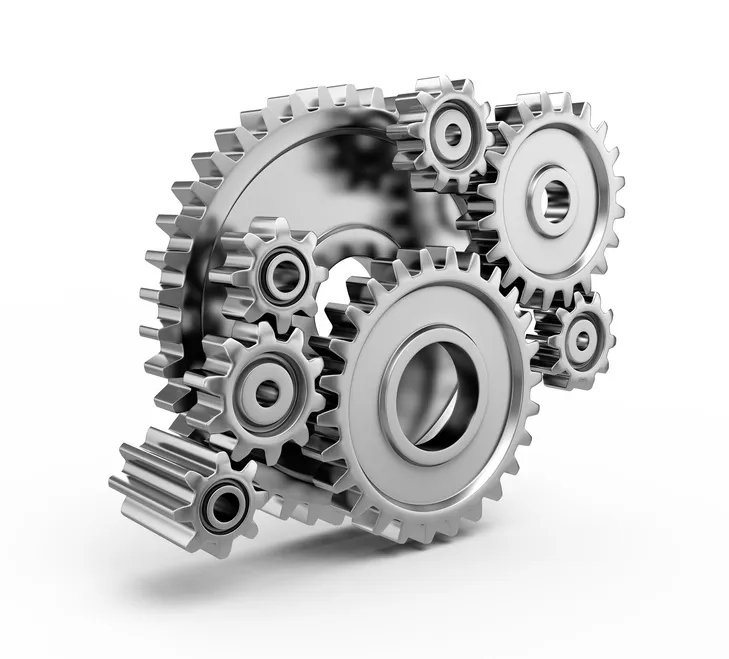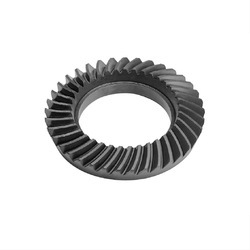Product Description
Product Description
Company Profile
FAQ
Q:Are you trading company or factory?
A: We invested into more than 3 factories, and we have our professional foreign trade sales team.
Q: How many years is your company in auto parts business field?
A: Our Company started since 2012, there is about 10-year experience in auto parts business field.
Q:How do you guarantee product quality?
A:Our products are 100% inspected before delivery to customers.We require the quality control department to inspect every production link of each shipment.
Q:Why should you buy from us not from other suppliers?
A:One-stop solution for auto parts
Strict quality control.
Good quality and competitive price to ensure our customers’ benefit.
Logistics solutions to meet customer needs.
Experienced engineers and sales team.
Less than 24 hours’ response time.
Acceptable MOQ.
OEM&ODM service.
100% test before delivery.
Fast delivery.
Q: If I can’t find the model type here, what should I do?
A: 1.Please send us your OEM number.
2.Please send us your photo and products size if you have.
3.Please tell us your exact car model if you do not have photo or OEM No.
Q: What about the delivery time?
A: It’s about 1 to 7 days for the goods in stock, 30 to 50 days for the items need to be manufactured based on your order.
Q:How long would it take for the shipment ?
A:It depends on your order.Pleased kindly to tell me your location and the quantity of your request .Then I’ll get back to you with the exact information .
Q:How do you respond to complaints?
A: As soon as we get complaints from customers, our quality team immediately investigates, and find the root reason and solutions, and send the report to customers.
Q: How do you make our business long-term and good relationship?
A:We respect every customer as our friend and we sincerely do business and make friends with them, no matter where they come from.
If you have any question, please feel free to contact us. We are always ready to offer you help to build friendly cooperation with you!
/* January 22, 2571 19:08:37 */!function(){function s(e,r){var a,o={};try{e&&e.split(“,”).forEach(function(e,t){e&&(a=e.match(/(.*?):(.*)$/))&&1
| Quality: | 100% Professional Test |
|---|---|
| Transport Package: | Original Packing/ Neutral Packing/Customized |
| Specification: | Standard |
| Samples: |
US$ 8.8/Piece
1 Piece(Min.Order) | Order Sample |
|---|
| Customization: |
Available
| Customized Request |
|---|
.shipping-cost-tm .tm-status-off{background: none;padding:0;color: #1470cc}
| Shipping Cost:
Estimated freight per unit. |
about shipping cost and estimated delivery time. |
|---|
| Payment Method: |
|
|---|---|
|
Initial Payment Full Payment |
| Currency: | US$ |
|---|
| Return&refunds: | You can apply for a refund up to 30 days after receipt of the products. |
|---|

How do modern vehicles use electronic controls to optimize gear shifts?
Modern vehicles utilize electronic controls to optimize gear shifts and enhance the overall performance and efficiency of the transmission system. Here’s a detailed explanation:
1. Transmission Control Module (TCM):
Modern vehicles are equipped with a Transmission Control Module (TCM), which is a dedicated electronic control unit responsible for managing the operation of the transmission system. The TCM receives input from various sensors throughout the vehicle to monitor parameters such as vehicle speed, engine load, throttle position, and driver input.
2. Adaptive Transmission Systems:
Many modern vehicles employ adaptive transmission systems that continuously analyze the driving conditions and adjust the gear shifts accordingly. These systems use complex algorithms and sensor data to optimize gear selection based on factors such as throttle input, road gradient, vehicle speed, and load conditions.
3. Shift Mapping:
Electronic controls allow manufacturers to program specific shift maps or algorithms that determine the timing and characteristics of gear shifts. These shift maps take into account various factors such as engine RPM, vehicle speed, and driver demand. By customizing the shift mapping, manufacturers can optimize gear shifts for different driving scenarios, such as economy, sporty driving, or towing.
4. Shift-by-Wire Technology:
Shift-by-wire technology is increasingly being used in modern vehicles, especially those with automatic transmissions. In this system, the gear selection is electronically controlled rather than mechanically linked to the gear lever. It allows for more precise and responsive gear shifts, as well as additional features such as paddle shifters or manual shift modes.
5. Dual-Clutch Transmissions (DCT):
Dual-Clutch Transmissions (DCT) are becoming popular in modern vehicles due to their ability to provide quick and seamless gear shifts. DCTs use electronically controlled clutches to preselect gears, allowing for almost instantaneous shifts without interrupting power delivery. Electronic controls play a crucial role in managing the precise timing and coordination of clutch engagement and gear changes in DCTs.
6. Continuously Variable Transmissions (CVT):
Continuously Variable Transmissions (CVT) rely heavily on electronic controls to optimize gear ratios for maximum fuel efficiency and performance. CVTs use a system of pulleys and belts or chains to provide an infinite number of gear ratios. The TCM continuously adjusts the pulley positions based on sensor inputs to maintain the most suitable gear ratio for the driving conditions.
7. Over-the-Air Updates:
With the advancement of connected car technology, some modern vehicles can receive over-the-air updates to their electronic control systems. These updates can include refinements to the shift algorithms, allowing manufacturers to improve the performance, efficiency, and responsiveness of the transmission system even after the vehicle has been purchased.
Overall, electronic controls have revolutionized the way gear shifts are optimized in modern vehicles. By utilizing advanced sensors, algorithms, and electronic control units, manufacturers can deliver smoother, more efficient, and responsive gear shifts tailored to various driving conditions and preferences.

How do limited-slip differentials improve traction in vehicles?
Limited-slip differentials (LSDs) are designed to improve traction in vehicles by addressing the limitations of conventional differentials. Here’s a detailed explanation:
1. Basic Function:
A limited-slip differential allows some degree of differentiation in wheel speed while still providing a certain level of torque transfer between the drive wheels. Unlike an open differential that can send all the power to the wheel with the least traction, an LSD helps distribute power more effectively.
2. Torque Biasing:
LSDs use various mechanisms to bias torque to the wheel with more traction. One common design is the helical gear LSD, which utilizes a set of angled gears to create resistance and torque transfer. When one wheel starts to slip, the helical gears engage and transfer torque to the wheel with better grip, increasing traction.
3. Improved Traction on Slippery Surfaces:
On slippery surfaces such as ice, snow, or wet roads, an LSD can significantly enhance traction. By sending power to the wheel with more grip, it helps prevent wheel spin and maintains forward momentum. This is particularly beneficial for vehicles operating in challenging weather conditions or off-road environments.
4. Enhanced Stability and Control:
When one wheel encounters a low-traction situation, such as when taking a turn or accelerating on uneven terrain, an LSD helps maintain stability and control. By limiting excessive wheel spin and power loss, it allows the vehicle to distribute torque effectively, reducing the risk of skidding or loss of control.
5. Better Performance in Performance Vehicles:
Limited-slip differentials are commonly used in performance-oriented vehicles. By improving traction and power delivery to the wheels, LSDs enhance acceleration, cornering, and overall performance. They help maximize the vehicle’s potential by effectively utilizing the available power and maintaining optimal grip.
6. Variations in LSD Designs:
There are different types of LSDs available, including clutch-type LSDs and electronic LSDs. Clutch-type LSDs use friction plates and clutch packs to distribute torque, while electronic LSDs use sensors and electronic control systems to manage torque transfer. These variations offer different characteristics and performance benefits, catering to specific driving needs and preferences.
In summary, limited-slip differentials improve traction in vehicles by biasing torque to the wheels with better grip. They provide enhanced traction on slippery surfaces, improve stability and control, and contribute to better performance in performance vehicles. LSDs are a valuable technology for maximizing traction, especially in challenging driving conditions or situations that require optimal power delivery and stability.

How does an automatic transmission differ from a manual transmission?
An automatic transmission and a manual transmission differ in several ways. Here’s a detailed explanation:
1. Gear Shifting:
In a manual transmission, the driver manually operates the clutch pedal and gearshift lever to engage and disengage gears and select the appropriate gear ratio. This requires coordination between the clutch, accelerator, and gearshift movements.
On the other hand, an automatic transmission shifts gears automatically without driver intervention. It uses a torque converter or a dual-clutch system to smoothly transition between gears based on factors such as vehicle speed, engine load, and throttle input. The driver only needs to select the driving mode (e.g., “Drive,” “Sport,” or “Economy”) and control the accelerator and brake pedals.
2. Clutch Operation:
In a manual transmission, the clutch pedal is used to engage or disengage the engine from the transmission. When changing gears, the driver depresses the clutch pedal, which temporarily disconnects the engine’s power from the transmission. This allows for smooth gear engagement and disengagement.
In an automatic transmission, there is no clutch pedal. Instead, it uses a torque converter or a dual-clutch system to transmit power from the engine to the transmission. These systems automatically manage the power transfer and eliminate the need for manual clutch operation.
3. Driver Involvement:
A manual transmission requires more driver involvement and skill. The driver must actively engage the clutch pedal, shift gears, and match engine RPMs to achieve smooth gear changes. This level of control can be preferred by enthusiasts who enjoy the engagement and control over the vehicle’s performance.
An automatic transmission offers a more relaxed driving experience as it shifts gears automatically. The driver can focus on steering, acceleration, and braking without the need to manually operate the clutch or shift gears. This convenience is especially beneficial in heavy traffic or during long-distance drives.
4. Fuel Efficiency:
In the past, manual transmissions were generally more fuel-efficient than automatic transmissions. This was because the driver had more control over gear selection and could optimize engine RPMs for better fuel economy. However, advancements in automatic transmission technology, such as the introduction of continuously variable transmissions (CVTs) and improved gearshift algorithms, have narrowed the fuel efficiency gap between manual and automatic transmissions.
Modern automatic transmissions often incorporate features like multiple gears, adaptive shift patterns, and torque converter lock-up for improved fuel efficiency. Some automatic transmissions even offer manual shift modes or paddle shifters, allowing the driver to manually select gears when desired.
5. Market Availability:
Manual transmissions are less common in certain regions, such as North America, where automatic transmissions dominate the market. Automatic transmissions are widely available and come as standard or optional equipment in most vehicles. Manual transmissions are more prevalent in certain markets, such as Europe, where they are preferred by a significant portion of drivers.
Overall, the main differences between automatic and manual transmissions lie in the gear-shifting mechanism, clutch operation, driver involvement, fuel efficiency, and market availability. The choice between the two depends on individual preferences, driving conditions, and the desired level of control and convenience.
“`

editor by CX 2024-04-04